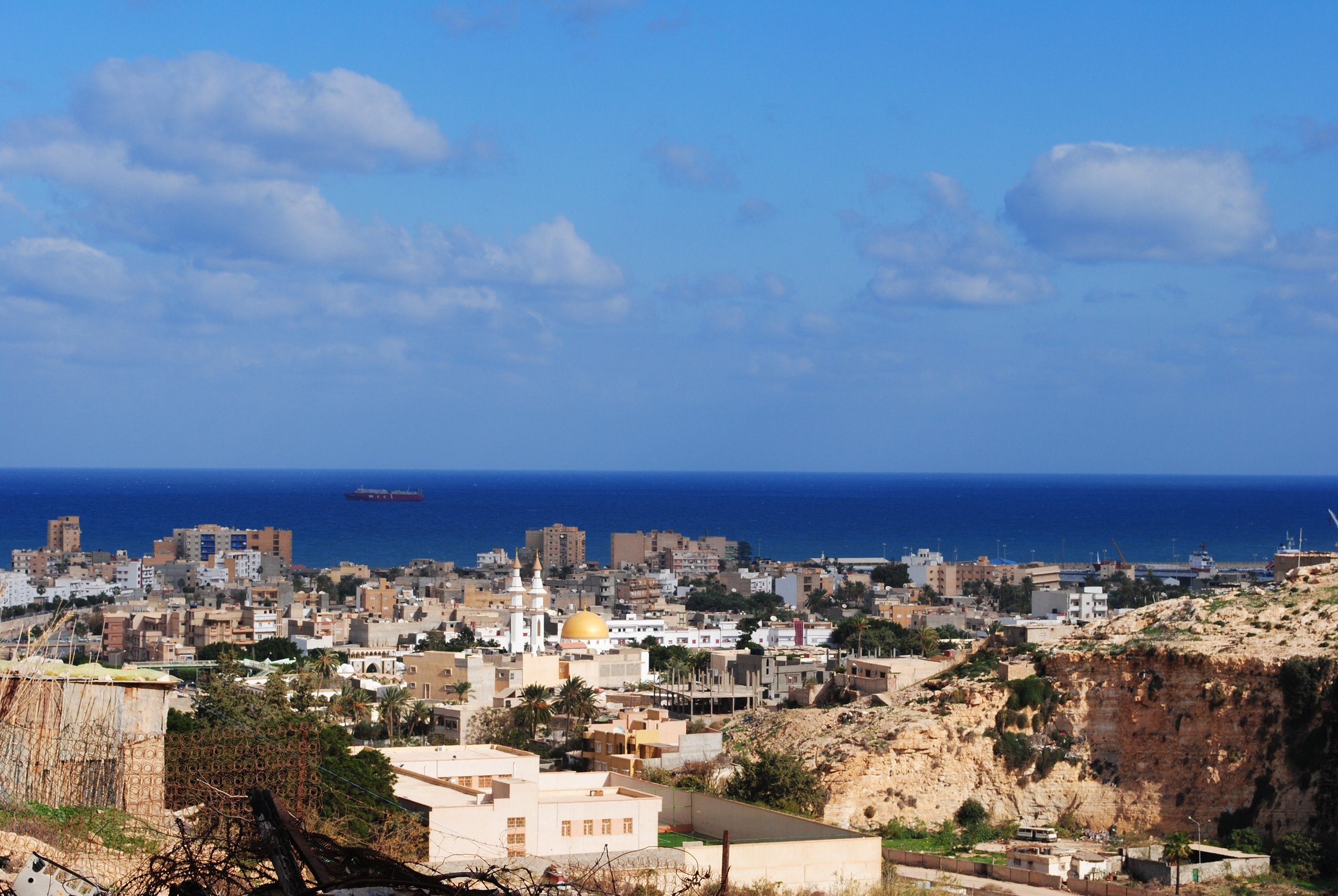Photo courtesy of Syed Wali Peeran via OpenVerse. The skyline of Derna, Libya, seen prior to the flooding. The coastal port city has Cyclone Daniel's highest death toll, with over 6,000 reported dead.
By Lily Benn ‘24
Staff Writer
Content warning: This article discusses mass death.
Cyclone Daniel devastated the northeastern Libyan city of Derna, as well as much of the surrounding communities in the Mediterranean region, on Sept. 10 according to the British Red Cross.
According to National Geographic, cyclones are similar to hurricanes and typhoons, but the title of the typically disastrous storm is dependent on the region in which it develops. As reported by CNN, Cyclone Daniel’s worst effects fell on northeastern Libyan communities, with the highest death toll in Derna, a coastal port city.
As the cyclone traveled through, it caused two of Derna’s dam infrastructures to collapse, the CNN article explained. The rushing water unleashed by the collapse of the dams, combined with the strong winds and rain of the cyclone, caused entire neighborhoods to be washed into the Mediterranean Sea. The remaining areas were destroyed by debris, the article stated, showing pictures of entire cars and buildings buried in soil.
The death toll had risen to over 6,000 at the time the CNN article was published, and the number of people displaced was over 30,000. According to a CBS News article published on Saturday, Sept. 16, the Libyan Red Crescent has now reported at least 11,300 deaths thus far, with over 10,000 people still missing.
In a different CNN article the eastern government of Libya disputed this high death toll, instead reporting 3,252 deaths. CNN was not able to verify the conflicting figures. However, articles from reputable sources, such as CBS News, also publish updated, higher death tolls.
According to CBS News, Libya’s General al-Sediq al-Sour said in a news conference on Sept. 15 that prosecutors will investigate previous Libyan governments and local authorities, as well as how funds for the dams were allocated in relation to their poor maintenance and resulting catastrophe.
Public health is also at risk following the flooding disaster, especially throughout Northeastern Libya and in Derna, explained CBS News. According to Haider al-Saeih, the head of Libya’s Center for Disease Combatment, at least 150 people have contracted diarrhea as a result of drinking contaminated water in the area around the floods. Furthermore, he warns of waterborne diseases spreading due to the lack of clean, bottled water. Explosive ordnance-military weapons and equipment from Libya’s recent political and military conflicts are also at risk of being set off from the debris and damage from the storm, PBS NewsHour reported.
In a New York Times article, health officials reported that, because of the difficulty and high amount of victims to recover, as well as the amount of time that has passed since the storm began, the window for rescuing survivors is becoming smaller. Rick Brennan, the director of the World Health Organization’s Eastern Mediterranean response, told The New York Times that most of the people who are missing are becoming less likely to be found alive.
According to The New York Times, the government had been warned about the dams and their infrastructure in Libya for years. The article explained that the government in Libya has made it difficult for public issues, such as dam maintenance, to be addressed as political unrest and division have taken the main stage.
The New York Times went on to report that Libya’s coastal towns and communities are especially vulnerable in the face of climate change-related disasters such as extreme storms. Before Cyclone Daniel, Osama Hamad, a top official in Libya, televised a meeting for Libyan news sources and reported that Libyan authorities were on alert. However, the article explains that Libyan residents did not receive a clear message to evacuate before the storm and the dam collapse.
According to CNN, health officials are attempting to honor the Islamic burial rites of the majority of the population by providing a burial within three days of death. However, this is proving difficult. For example, decomposition makes identification and retrieval more difficult, morgues are full, debris is covering bodies in the aftermath of the floods on the mainland, the currents in the Mediterranean Sea make it difficult to keep track of all bodies seen and the search and rescue teams can only access the moving bodies seen from the mainland by limited boat and diving equipment, according to CNN.
CNN reports that surrounding governments and communities have been sending search and rescue teams, including from Tunisia and Turkey. An Algerian aircraft delivered humanitarian aid, including food, clothing, tents and medical supplies. The EU has also released an initial $540,000 in humanitarian aid after a call for international assistance from Libyan authorities, according to CNN. Countries and organizations such as Germany, Romania, the United Nations, the United States, Britain, Finland, Italy and the United Arab Emirates have been reportedly offering supplies, funds and civil defense teams to assist with search, rescue, burial and community and governmental recovery.

